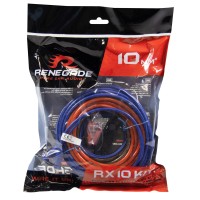Active subwoofer JBL BASSPRO NANO
6" x 8", 100W RMS
More about the product
More about the product
We will help you with your purchase
- Use our consulting room
- You can return the goods to us within 14 days
- Try the product at our store
Active subwoofer JBL BASSPRO NANO
BASSPRO NANO from JBL provides deep bass and takes up little space. The smallest active subwoofer from JBL can be hidden in the most compact places and delivers exceptional audio system performance to any car. It has a robust aluminum die-cast housing with an anodized matte black finish that looks great. Thanks to the 100W amplifier, the BASSPRO NANO provides the engaging and solid bass you expect from JBL, all with simultaneous cooling and minimal current draw from your vehicle's power system.
Function
- Big bass, small space.
- Intelligent electronic design for reliable and remarkable performance.
- Cast aluminum housing design.
- Bass volume remote control.
| Catalog number | BASSPRO NANO |
| Brand | JBL |
| Links | CZ official web presentation |
| RMS power of the subwooferThe RMS power of an active subwoofer is the constant power that the active subwoofer can play over a long period of time. We recommend following this value. The RMS power of active subwoofers is taken as the RMS power of the integrated amplifier, which in most cases is slightly undersized, which guarantees protection against subwoofer burning. | 100W |
| Maximum subwoofer performancePeak performance or Max. power that an active subwoofer can play for a moment (approx. 0.5 s), for example when percussion instruments are struck in a recording. But it is not as important a parameter as the RMS power. | 200 W |
| The diameter of the subwoofer usedThe diameter of the subwoofer that is installed in the active box. | 6" x 8" (152mm x 203mm) |
| Frequency rangeThe ability of the device to reproduce a signal from the lowest frequency to the highest, or the ability of an active subwoofer to faithfully reproduce sound in a specific frequency band. Professionally: In the frequency range from 40 to 16,000 Hz, the vast majority of fundamental and overtones (harmonics) of all musical instruments are found. We are interested in the course of the radiated sound pressure in this range of frequencies when the loudspeaker system is supplied with constant power. We call this course the frequency characteristic, which tells us the level of radiated sound pressure in decibels (dB) depending on the frequency. The frequency characteristic of a speaker or speaker system can be expressed most succinctly with a graph. Mostly, however, the frequency characteristic is indicated by indicating the maximum tolerance of the sound pressure in the given frequency range, e.g. 50 to 15,000 Hz -+ 6 dB. since the frequency characteristics of loudspeakers and systems in general are quite uneven, some manufacturers do not even specify this maximum tolerance of sound pressure in decibels for reasons of prestige. Data impoverished in this way is worthless. What is valid is that the manufacturer offers a speaker system with a frequency range of 30 to 20,000 Hz, if he is worried about stating the maximum unevenness of the sound pressure in this range, because he can have a tolerance of, for example, +- 20 dB. The unevenness, i.e. the undulation of the frequency course in good speaker systems for quality music performance should not exceed +-3 dB in the 80 to 12,000 Hz band and +-6 dB in the 40 to 16,000 Hz band. Greater unevenness already depletes or emphasizes certain tonal areas, which can cause audible or even disturbing distortion. The proportion between fundamental tones and higher harmonics also changes, thereby changing the color of the sound, and individual musical instruments as well as the entire musical image sound unnatural. | 30 Hz - 150 Hz |
| Active subwoofer dimensions | 260mm x 195mm x 74.6mm |
Product comments
Evaluation
Product assembly
ask us





















